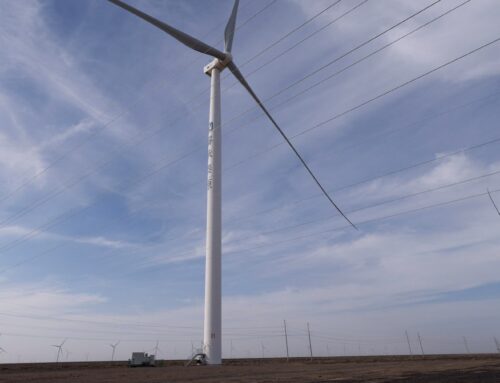Why Bitcoin doesn’t need ETFs—it needs grocery stores
April 22, 2025
|
Getting your Trinity Audio player ready… |
Bitcoin, the world’s first decentralized digital currency, has spent over a decade capturing the imagination of tech enthusiasts, libertarians, and investors. Its price has soared from pennies to tens of thousands of dollars, and its narrative has evolved from a cypherpunk experiment to a so-called “digital gold.”
In recent years, the financial world has buzzed with excitement over Bitcoin exchange-traded funds (ETFs), with proponents arguing that these instruments bring legitimacy and accessibility to the masses. But here’s the contrarian take: Bitcoin doesn’t need ETFs to succeed; it needs grocery stores. Real-world adoption, not Wall Street wrappers, is the key to its growth, multiplication, and global embrace.
The ETF obsession: A shiny distraction
Bitcoin ETFs, like the ones launched in the United States and elsewhere, allow investors to gain exposure to Bitcoin’s price without owning the asset itself. They’re hailed as a bridge between traditional finance and the crypto frontier, making it easier for institutions and retail investors to dip their toes. In 2024 alone, billions flowed into these funds, with firms like BlackRock (NASDAQ: BLK) and Fidelity touting them as a game-changer. The logic is simple: more money in, more price appreciation, more mainstream credibility.
But this focus on ETFs misses the point of what Bitcoin was designed to be—a peer-to-peer electronic cash system, as Satoshi Nakamoto outlined in the 2008 white paper. ETFs turn Bitcoin into a speculative asset, a ticker symbol for portfolio diversification, rather than a functional currency. They tether it to the very financial system it was meant to sidestep, complete with custodians, regulators, and middlemen. Sure, ETFs might pump the price in the short term, but they don’t address the deeper challenge: making Bitcoin useful in everyday life.
The grocery store test
Imagine walking into your local grocery store, filling your cart with bread, milk, and eggs, and paying with Bitcoin at checkout. No fuss, no conversion to fiat, just a quick scan of a QR code and a transaction confirmed on the blockchain. This isn’t a pipe dream—it’s the kind of real-world application that could catapult Bitcoin adoption to new heights. Yet, despite this, Bitcoin remains a rarity at the point of sale.
Why does this matter? Because utility drives demand. If Bitcoin becomes a medium of exchange for daily purchases, it’s no longer just a store of value for hodlers or a plaything for traders—it’s a living, breathing electronic cash system. Grocery stores, coffee shops, and gas stations accepting Bitcoin would create a feedback loop: more merchants adopt it because customers demand it, and more customers use it because merchants accept it. This organic growth would dwarf the impact of any ETF, which primarily benefits those already in the financial elite.
The adoption bottleneck
Bitcoin’s current adoption is stymied by practical hurdles such as volatility; spending Bitcoin on groceries feels like a gamble when its value could jump 10% by dinner time.
Contrast this with the ETF narrative, which sidesteps this issue entirely. ETFs don’t care about Bitcoin’s usability; they’re built for holding, not spending. But solving these bottlenecks—through scaling solutions, stablecoin integrations, or merchant incentives—would unlock a far bigger prize than institutional buy-ins. El Salvador’s experiment with Bitcoin as legal tender, flawed as it may be, hints at this potential. In 2021, the country rolled out the Chivo wallet, aiming to make Bitcoin a daily tool. While uptake has been uneven, the vision of buying pupusas with Bitcoin shows what’s possible when the focus shifts from Wall Street to Main Street.
The global perspective
Bitcoin’s promise shines brightest in places where financial systems are broken—think Venezuela, Nigeria, or rural India. In these regions, ETFs are irrelevant; most people don’t have brokerage accounts or disposable income to invest. What they need is a way to pay for goods and services when local currencies collapse or banks fail them. A farmer in Lagos accepting Bitcoin for yams could spark more adoption than a dozen ETF approvals on Wall Street.
This isn’t to say ETFs are useless. They’ve brought awareness and capital to the space, paving the way for infrastructure development. But they’re a stepping stone, not the destination. The real multiplier effect comes when Bitcoin becomes mundane—when it’s as unremarkable to spend at a grocery store as cash or a debit card. That’s when the network effect kicks in, pulling in billions of users worldwide, not just a few million investors.
The path forward
So how do we get there? First, the Bitcoin community—developers, businesses, and advocates—needs to prioritize usability over speculation. Companies like MNEE and HandCash, which integrate Bitcoin payments, should push harder into retail partnerships. Governments could help by offering tax incentives for merchants who accept digital assets, though Bitcoin’s ethos leans toward grassroots momentum over top-down decrees.
Second, education is key. Most people still see Bitcoin as a get-rich-quick scheme, not a practical tool. Campaigns showing how to buy a coffee with Bitcoin—or better yet, a week’s groceries—could shift perceptions. Finally, volatility might need a cultural reframing: instead of a bug, it’s a feature of a nascent currency finding its footing.
Bitcoin doesn’t need ETFs to thrive—it needs grocery stores, bodegas, and markets where real people spend real money. ETFs are a financial parlor trick that amplifies price but not purpose. True adoption comes when Bitcoin moves from trading screens to checkout lines, from a speculative asset to a global currency. The revolution Satoshi envisioned wasn’t about Wall Street’s balance sheets—it was about empowering individuals to transact freely. Let’s stop chasing ticker symbols and start building a world where Bitcoin buys the bread on your table. That’s how it grows, multiplies, and conquers.
Watch: Armen Azatyan shares his vision for Bitcoin and DXS trading app
Search
RECENT PRESS RELEASES
Related Post





